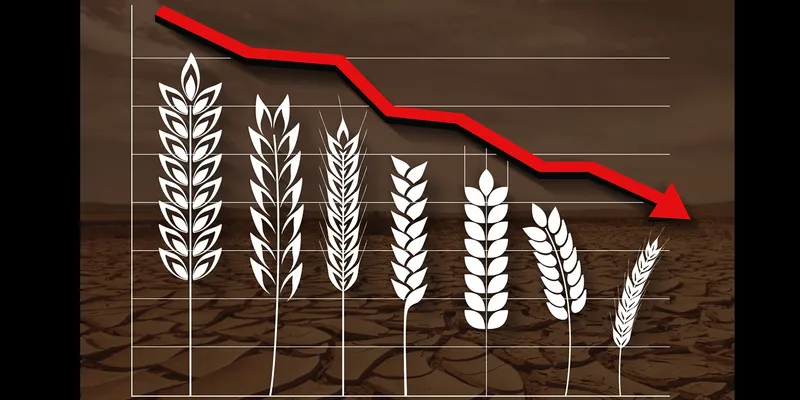

Climate Change: India’s battle between economy and environment
India’s growing population and emissions of Greenhouse Gases (GHGs) are rising fast. A report by the Times of India in 2017, puts India amongst the top 5 largest emitters in the world. So, the country’s ability to tackle development without the massive use of fossil fuels will decide the fate of the country. Human-induced climate change is real, and it’s about time we wake up to reality, and the reality is quite shocking.
Climate change: Threat to life and survival

Climate Change
Today, a potential future threat has become a hard-hitting reality. Scientific consensus has proved that emissions have led to climate change that’s affecting the global weather patterns. The Centre for Science and Environment says that India is getting warmer ever since the beginning of the 20th century, but more so during the last decade, with the average temperatures increasing rapidly. Reports of scorching heat across several parts of India, with temperatures rising up to 50°C isn’t new. According to the Ministry of Earth Sciences (the year 2017), in the last couple of years, India has seen close to 4,700 deaths caused by the gripping heat waves.
Researchers at the Massachusetts Institute of Technology (MIT) predict that the deadly effects of human-induced climate change could lead to large parts of South Asia becoming uninhabitable. Especially the current densely populated regions around the Ganges and Indus rivers, which might become too hot for human survival by the end of the century. Meaning, even the current generation could be looking at losing their hometowns within the next five or six decades.
The river system in India is also under attack, the rising temperatures affect the Himalayan glaciers, which could lead to receding water-levels of some of the Indian rivers. Apart from profound occurrences of heat waves and threats to river water systems, we can also see extended droughts, increased frequency of extreme rainfall, rising sea levels and changes in ocean acidity. With the rapid melting of glaciers, even the coastlines are under threat. India is extremely vulnerable to these effects, and several global reports say that we could be looking at the eviction of a large portion of our population by the end of the century. This could also translate to negative impacts on water and agriculture, leading to food insecurity.
India’s growing energy demands
India is banking on high-carbon based development, with close to 60% of the country’s plans involving carbon as the primary source of energy. This could leave the country accountable for a significant chunk of the world’s carbon footprint. Additionally, the country is looking at the fast development of rural India, possibly amongst the fastest known transitions in history, with rapid industrialisation. This means more buildings, more vehicles, more electricity, and more emissions. Owing to our large population, even the slightest increase in emissions per person, would add adversely to the global crisis.
Solution: Move to renewable energy
On the one hand, we see floods and extended periods of drought killing thousands of people in several parts of the country. On the other hand, we are facing the looming issue of the country’s development, without adding to the global environmental crisis. Currently, India relies on coal-based power because it’s the cheapest. Not only does it affect the environment, it also is not easily renewable. Our move towards cleaner sources of energy will certainly decide the fate of the nation.
On a positive note, the Indian Government is already set on the path of revamping our development plans, by using diverse mixes of renewable energy sources (especially after the Paris Agreement was ratified). With plans and policies getting into places, this is our time to quickly move into action. However, where do we start?
Solar Energy: Among the sustainable solutions
While India plans a bouquet of renewable sources of energy, a lot of focus is being diverted towards Solar energy, and rightly so. India’s Solar Powerbase is rapidly progressing, with continuous development in the Tamil Nadu, Rajasthan, Gujarat, and Maharashtra, through numerous projects. According to the reports by the World Bank, India’s location offers the best conditions for capturing solar energy.
The National Institute of Solar Energy’s study shows that the country has the potential to generate 748.98 GW of solar power. Currently, we are just about breaking the ground - Research by Mercom India shows that India has just achieved an operational solar power capacity of 20 GW. This in itself is a huge leap for the country towards solar energy. The 20 GW target was set for 2022, and we have achieved it four years in advance. And, this is a huge milestone. Plans to source 40% of the nation’s electricity requirements are amongst the goals set for 2030. As a part of the Ministry of New and Renewable Energy’s Solar Cities program, our government's ambitious plan aims at establishing 60 solar cities across India. Considering this, the market players in India now have enough incentives to move to clean sources of energy. Increased demand for clean sources of energy will definitely make it a more affordable option, but there is a long way to go before our houses become solar powered.
So, would the Ganges continue to flow in 2080? Will Kanyakumari continue to be the southernmost tip in 2060? Will Mumbai be lost to the sea by 2040? If we continue on our path towards cleaner energy, the answers don’t seem so bleak!
Chief Executive Officer(CEO),Fiinovation






